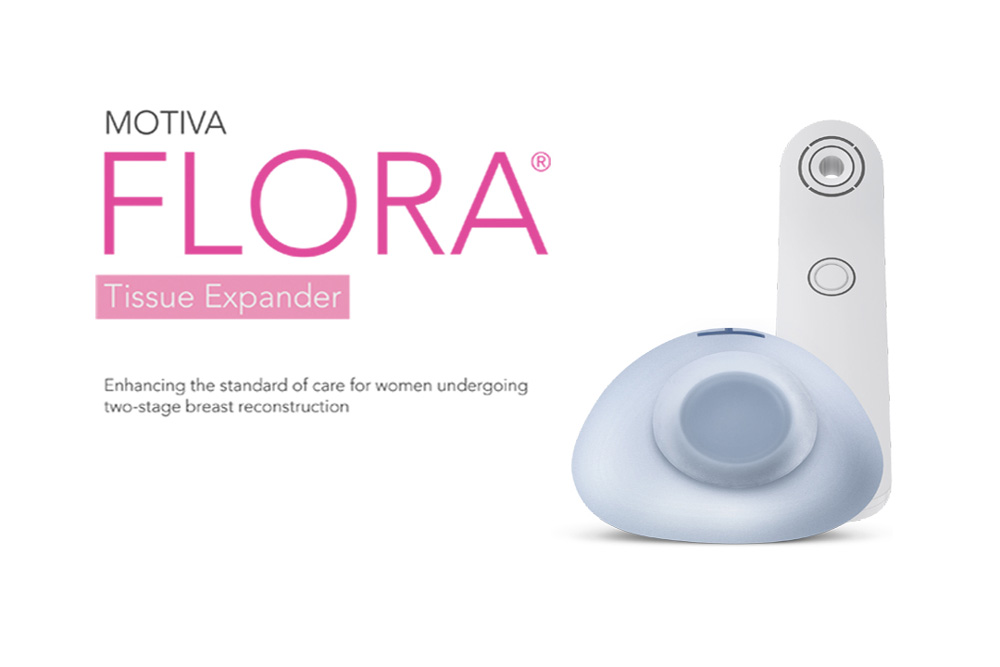
Motiva Flora® Tissue Expander Made for Breast Reconstruction
We are only weeks away from celebrating Breast Cancer Awareness Month in October. Usually, when talking about breast cancer, most of the conversations gear towards treatments for the condition, such as mastectomy or breast removal surgery. Also, we hear about the amazing stories of breast cancer survivors, most of them undergoing the mentioned surgery.
However, what many do not mention is what happens afterwards. Some breast cancer survivors who have undergone mastectomy go through an emotional slump after their operation. As they have lost their breast, they tend to feel less like a woman. It’s such a common occurrence among these women that procedures such as breast reconstruction have become popular.
Breast reconstruction helps to rebuild the shape and look of the breast. With that said, breast reconstruction has a different process and medical needs compared to your ordinary breast augmentation procedure. There is little to no breast tissue to work with breast reconstruction as most of it has been removed due to mastectomy. So, it would be difficult to place implants- of any size or shape- into the chest area, and forcing them to do so may cause major damage to the tissues or the implant itself. Luckily, there are tissue expanders that can be used to aid this type of situation.
As the name suggests, tissue expanders are used to expand and give extra skin laxity. It is usually a silicone balloon-shaped expander inserted under the skin, which is then gradually filled with saline water or carbon dioxide. As it is filled, it causes the skin to stretch. Tissue expanders can be used for different areas in the body and for various reasons, such as repairing skin damaged by birth defects, accidents, or surgery. It can also be used in other plastic and cosmetic procedures. Although, a tissue expander is synonymous with its use in breast reconstruction surgery.
With that in mind, how are tissue expanders used in breast reconstruction? How can it help you restore the look and feel of your breast? Let us dive deep into some things you need to know about tissue expanders and breast reconstruction, and, in the process, talk about what particular tissue expander can give you the results that you want.
Breast Reconstruction with Tissue Expander
As mentioned earlier, tissue expanders are composed of a silicone outer shell with either an internal valve or external port, where the saline fluid passes through, filling the shell and stretching the skin over time.
Though they share some similarities, you should not confuse tissue expanders with breast implants. Tissue expanders are not permanent. They are filled with saline over six to eight weeks, or until it reaches the breast size that you and your surgeon agreed on. The expander is only there to create enough stretch in the skin to allow the placement of permanent breast implants. Even if they are not permanent, tissue expanders should match the qualities of the breast implant to be used when reconstructing the breast. Both expanders and implants usually come in round and anatomical shapes and have either smooth or textured surfaces.
There are two common scenarios wherein tissue expanders can be placed. You may decide if you want it to be inserted at the same time as your mastectomy surgery, or you want to have it placed after you have healed from your mastectomy. Either way, you need to talk to your surgeon beforehand to plan the implants and expanders to be used for you.
If you’re going to have mastectomy and expander placement simultaneously, you will remain under general anaesthesia the whole time. On the other hand, if you choose to have them placed at a later date, a combination of local anaesthesia and sedative may be used.
Just like implants, a tissue expander can either be placed below the skin or below the muscle.
Subcutaneous placement puts the expander below the skin and above the pectoral muscle. As the skin tends to be fragile after mastectomy, it’s vital to take pressure off the skin. That’s why for this placement, the expander is filled with air, which is less dense than saline.
Submuscular placement inserts the expander below the pectoral muscle through a pocket of tissue. Here, normal saline can be used to fill the device. Even though the skin is fragile after mastectomy, the muscle serves as a barrier between your skin and the tissue expander. This technique is more commonly used as the muscle around the expander- and the implant later-on gives support to prevent bottoming out.
However, much like other medical devices, tissue expanders can come with possible risks and complications. Some of these include the following:
- Infection. As the placement of expanders is an invasive surgery, the risk of infection is a given. It is not caused by the device itself. Rather, it usually comes when the external port of the expander is not kept clean. Infections can be treated with antibiotics. In some cases, the expander is removed until the infection clears, then a new one is inserted.
- Rupture or leak. Placement inside the body can put some pressure on the expander. If the shell of the expander is not strong enough, it can break, causing rupture and leakage. The saline solution does not harm the body, though you need to have the expander replaced.
- Lumpiness. Due to the thin consistency of saline or the loose density of air, rippling may occur. It is specifically noticeable if the expander is placed below the breast skin. The issue can be addressed by using good quality breast implants for the permanent procedure.
With that said, do not let these issues stop you from pursuing breast reconstruction with tissue expanders. Most of these complications are associated with older versions of a tissue expander. If you want to assure less risk, go for a newer generation of tissue expanders.
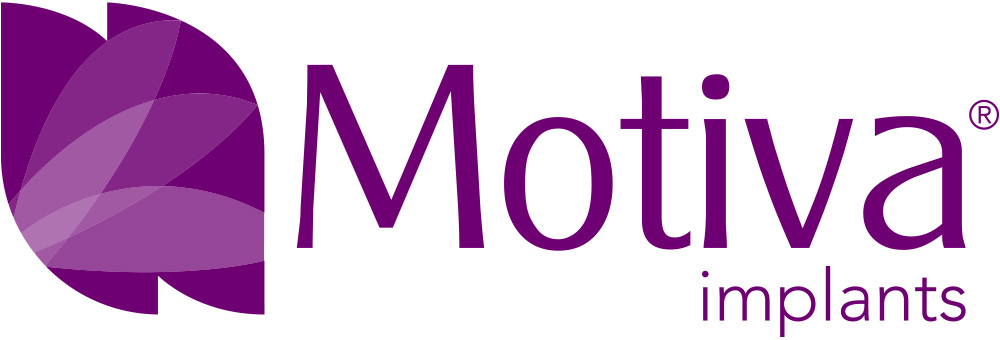
Motiva Flora® Tissue Expander for Breast Reconstruction
From the makers of Motiva® Implants, the 6th generation of breast implants, comes the Motiva Flora® Tissue Expander. It is used for breast reconstruction after mastectomy, intended for a temporary subcutaneous or submuscular placement for no longer than six months. Aside from breast reconstruction, Motiva Flora® can also be used for correction of an underdeveloped breast, scar revision, and tissue defect procedures.
Like other tissue expanders, the expansion process with Motiva Flora® goes through two stages. The first stage includes the use of a silicone rubber balloon-like tissue expander, inserted under or over the pectoral muscle. The second part involves filling the shell with saline solution. The expander is gradually filled with the saline solution over weeks or months. As a result, the skin stretches and creates a breast mound. The space created by the tissue expander is where the breast implant is placed once the expander is removed.
What set’s Motiva Flora® apart from other tissue expanders is its innovative features. Some of these unique characteristics are the following:
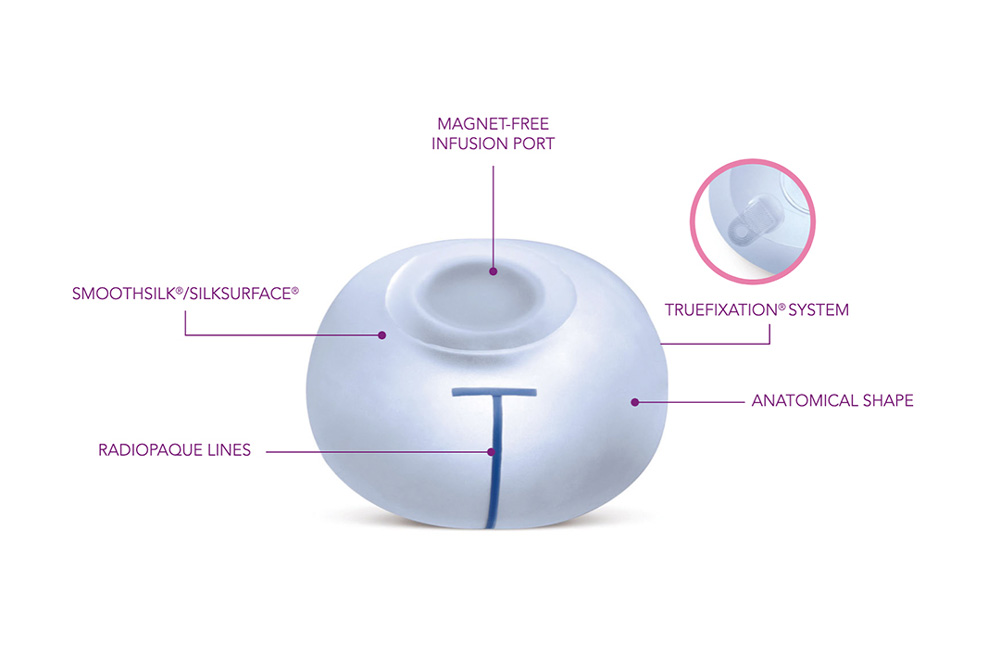
- SmoothSilk™/SilkSurface™
- Motiva Flora® has a uniform nanotextured shell, achieved through 3D nanotechnology imprinting. Its outer surface optimizes biocompatibility and minimizes tissue reactivity, minimizing the attachment and growth of bacteria. As a result, there’s a very low rate of capsular contracture and no reported cases of BIA-ALCL among breast surgeries using Motiva Flora®.
- BluSeal®
- Motiva Flora® is the only breast tissue expander in the world that comes with a lightly tinted blue barrier layer, made with biocompatible dyes. The blue tint helps surgeons verify the presence of the protective layer surrounding the expander. BluSeal® verifies that the expander is 100% intact, making it easy to spot defective products and avoiding its use for breast reconstruction.
- TrueMonobloc®
- Motiva’s configuration makes the Motiva Flora® Tissue Expander tensile and sturdy. The multilayer system that links all implant components (shell, barrier layer, and patch) creates a unified structure, maintaining the elasticity and integrity of the shell.
The three mentioned features can also be found in all Motiva® Breast Implants. So, for instance, if you opt to use Motiva Ergonomix™ as your permanent breast implant, you will also be getting the same benefits as you would with your temporary Motiva Flora® Tissue Expander.
With that said, Motiva Flora® has more specific features that aid in its use for breast reconstruction, such as:
- Radiopaque Orientation Lines
- Blue orientation lines can be seen on the Motiva Flora® to ensure the correct positioning of the tissue expander. The radiopaque lines and dots are designed to serve as a guide for the surgeon when implanting the device. Furthermore, these lines act as indicators of any possible postsurgical malposition during an X-ray procedure.
- TrueFixation® System
- Motiva Flora® has two fixation tabs made from reinforced silicone. These are sutured to adjacent breast tissue, preventing potential rotation or displacement of the expander post-operation. It can also help in improving breast symmetry.
- Radiofrequency Identification Device (RFID)
- The Motiva Flora® Tissue Expander is the first tissue expander made with an integrated Radio Frequency Identification (RFID) port. The said port can be located using an external Motiva Flora® Port Locator, which uses the RFID signal emitted by the air wound coil placed inside the needle stop (internal component). The air wound coil interacts with the port locator in identifying the injection port’s location. Again, the use of an RFID signal is an innovative technology that’s not found in other tissue expanders, except Motiva Flora®.
Furthermore, Motiva Flora® has an RFID microtransponder programmed to access information about the tissue expander even outside the body. For instance, you can know the model or size of the expander by waving a handheld reader over the breast area. Unlike a typical warranty card provided after the surgery, this microtransponder can never be lost or misplaced. Also, as it doesn’t require a battery, its life expectancy is indefinite.
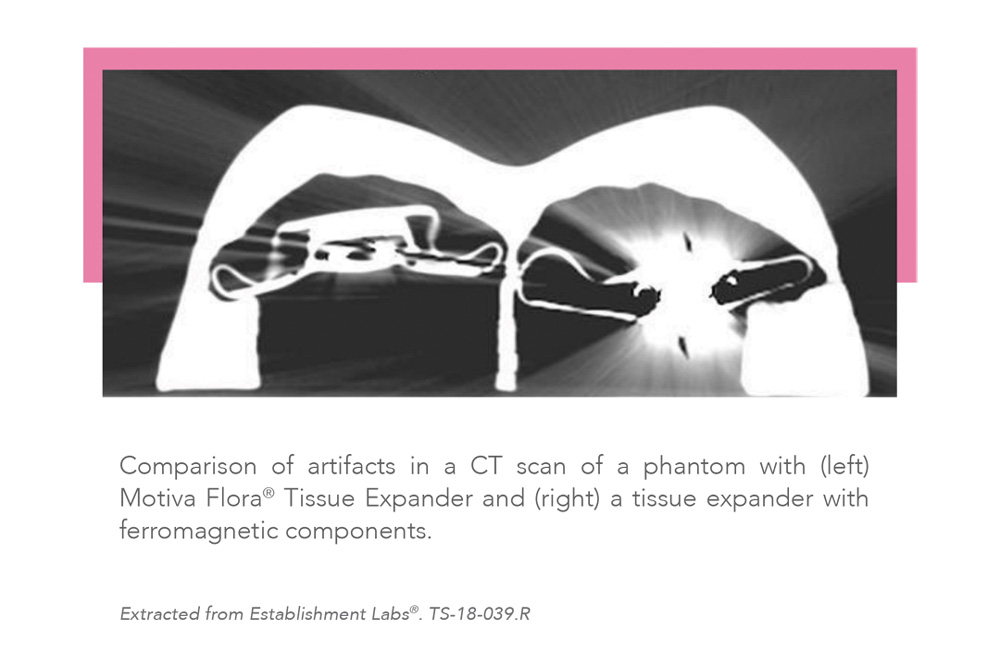
MRI and X-Ray after Breast Reconstruction
Magnetic resonance imaging (MRI) or X-Ray is important for any breast cancer survivor, especially if you have opted to undergo breast reconstruction. Sadly, the condition is something that might redevelop. MRI can help in tracing early signs of asymptomatic cancer recurrence in the reconstructed breast and evaluate the extent of the condition.
That’s why you might be required to constantly undergo an MRI or X-Ray. Regardless of what stage of recovery you are in, whether you only got done with mastectomy or already have your breast reconstructed, being able to undergo screenings is something you need to keep in mind. So, even if you only have tissue expanders temporarily, you need to make sure that it does not interfere in monitoring your state of health.
However, some tissue expanders obstruct MRI screenings. Traditional tissue expanders use magnetic ports, which causes substantial signal loss and distortion of MR images. It obscures the view of parts of the device’s footprint and parts of the body tissue. Moreover, these magnetic ports can cause safety issues including valve dislodgement and burning sensations. That’s why some traditional tissue expanders are considered “MR Unsafe”.
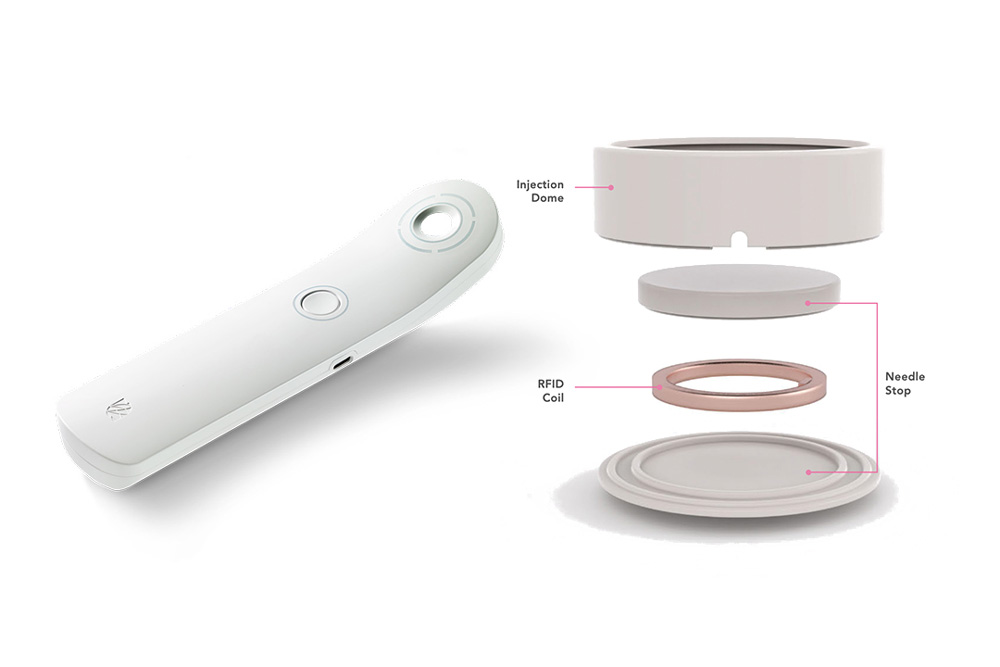
That’s another issue that Motiva Flora® addresses with its innovation. Motiva Flora® comes with an integrated port that’s located with the Motiva Flora® Port Locator, which has a radiofrequency identification (RFID) wireless system that emits radio waves to identify the location of the port. It uses copper rings instead of other metal components, such as magnetic ports.
As the Motiva Flora® Tissue Expander does not contain any ferromagnetic materials, it minimizes interference in the MRI process. Traditional tissue expanders that use magnetic ports distort Computerized Tomography (CT) Scan images, making it difficult to monitor your condition while the device is placed in the body. On the other hand, Motiva Flora® decreases distortion in CT Scans, allowing monitoring of possible complications with the help of imaging tools with high sensitivity and specificity.
While it signals your triumph against breast cancer, mastectomy can cause some issues to a woman’s self-esteem. Luckily, medical advancements in areas such as breast reconstruction make it possible to restore the look and feel of your breasts. With that said, breast reconstruction is a big decision for anyone to take. So, you need things that will support you throughout the process.
While it would only stay in the body for a temporary period, thinking about the tissue expander you will use can create a big impact on your experience. Innovations like Motiva Flora® can help you achieve the results that you want in the safest and most efficient way possible. You are a survivor and you only deserve the best moving forward. There is nothing wrong with seeking the best medical devices for your breast reconstruction surgery.
